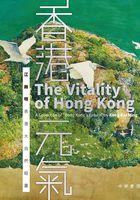
Foreword2
Kai Ming was my classmate in Pui Ching Middle School 60 years ago. We shared the same desk in classroom. My biggest fear was arts class. Be it sketching outdoors or still life, I would not know how to start. Kai Ming would help me finish the paintings. As he was weaker in mathematics, I would help him back. Thus we have built up a strong friendship over the years. We would still remember about this "mutual cooperation" for a long time. At that time, his artistic talent was already apparent. The Christmas cards drawn by him, which were displayed in school, were better than those sold at shops. Therefore, I was certain that he would be a successful artist.
Having experienced vicissitudes of life, under the arrangement of an old schoolmate Hon Yu Wu, we were reunited last year. We, the two old men, were like any other old friend, without any sense of unfamiliarity. As usual, he expressed his insights on arts. He also gave me two of his albums before he left. Having looked at the paintings carefully, my soul was deeply touched. I could feel the painter's yearning for the nature, his strong ties with the motherland and Hong Kong. The audience could especially see the urban changes of Hong Kong and the painter's unique interpretation.
I have to admit that my artistic appreciation skills are lacking. I have been to The Louvre in Paris, and a number of famous art museums in the United States and Italy. While I can observe unique details of certain paintings and have my soul be touched, I cannot differentiate between the artistic levels among painters. When Kai Ming's works are placed alongside the masterpieces, to me the differences would be the sizes, or whether the medium is oil pastel or watercolour. They each have their own admirers.
I know that Kai Ming has received a number of prizes and honours in Hong Kong, and is of respectable reputation in the international arena. However, this is not what I would have expected in secondary school. I have only recently learned that after graduation, he gave up the opportunity to study abroad in order to take care of his parents. Otherwise, we would have another great painter comparable to Daqian Zhang and Baishi Qi. In Hong Kong, an artistic desert, it is already commendable for Kai Ming to achieve this level of success by his own efforts.
Lastly, I would like to make a point on Kai Ming's comment that "everything in nature is composed of numbers". To me, someone who conducts mathematical research, nature is made of elementary particles and energy. Its kinetic development can be described by a series of mathematical formulae (which are still under research). With our senses, we can feel the presence of the universe. While vision is the most basic sense, to artists, what they mainly perceive is the world of colours, and colours are made up of light with varying frequency (or wavelength). This is the basis in physics of digitalising paintings (and photos) on computers. Therefore, it is not only correct for a painter to say that "everything in nature is composed of numbers", but is also a progress from emotions to rationality. As a painting can be digitalised, the question of whether computer can paint ensues. As we all know, modern scientific research, engineering design and high-end industrial products are inseparable from computers. A few years ago, computers could do complicated geometric proof; recently, there was a sensational victory of computers beating a first-class Go master. All this makes people think that computers are invincible. In fact, no matter how fast can a computer calculate, it can only solve "calculable" complex problems. Regarding spirituality, artistic creation and evaluation criteria, they cannot be explained scientifically or logically. Therefore, as what Kai Ming said, paintings are products of spirituality and are not "calculable". Colours (or musical notes) created by computers can only reach the standard of "craftsmen". I can say with certainty that artistic creation cannot be replaced by computers.
Prof. Hong Ci Huang
Former Researcher at the Institute of Computational Mathematics and Scientific/Engineering Computing
Member of Working Group 2.5 on Numerical Software, International Federation for Information Processing Professor, Department of Mathematics,
Hong Kong Baptist University